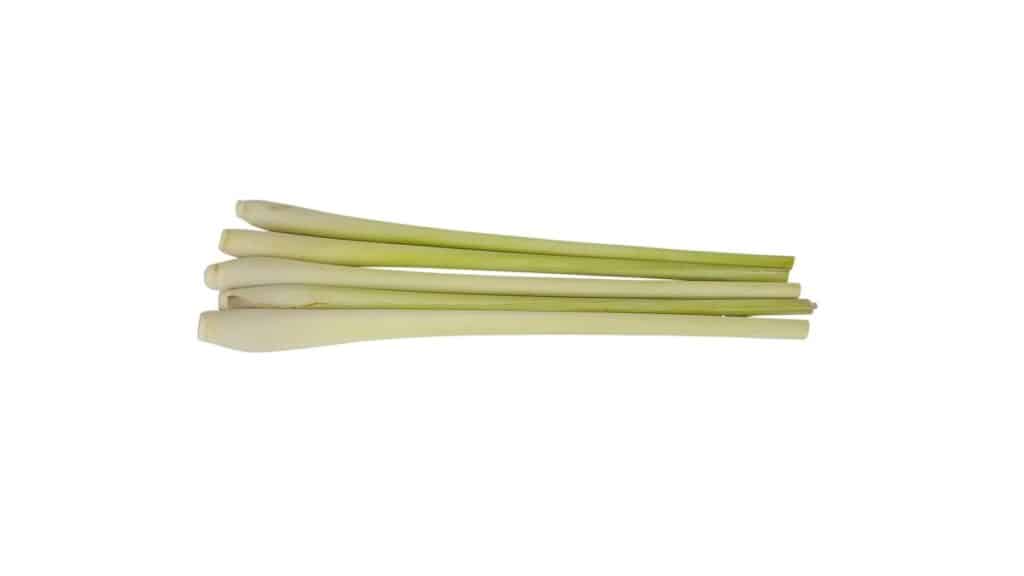How To Grow, Harvest, And Cook With Lemongrass
Why Grow Lemongrass? Do you like a flavor, bright, citrus-like, lemon-like, but not bitter? Would you like them growing in the garden and ready for the kitchen? Do you appreciate these tropical climate foods? Thai cooking, Sri Lanka, Vietnam, Indonesia, and India; do you like stir-fries, curry, soups, seafood, beef, chicken, and fresh vegetables? Have you got a sunny space for waving green grass about 2-2.5′ tall, in a pot or on the ground?
What is the Flavor Profile of Lemon Grass?
You will taste ginger, lemon, and the citrus hint. It does not overpower food. Expect a fresh, brightness. It adds a sharp and tangy element to your food and the lemon is a little like a lemony mint.
Expect lemongrass to enhance rice dishes, tea, ginger-flavored beverages, soup, sauces, and curry. Where does it get that flavor? Lemongrass contains the essential oil Citral. This oil has anti-microbial and anti-fungal properties as well as its unique and useful flavor…
Lemongrass, Garden to Kitchen

Lemongrass is an easy-to-grow tropical herb that is hardy in zones 9-10. In cooler climates, you can bring the stalks indoors for the winter. Many herbs useful in the kitchen are also attractive in the garden and lemongrass is no exception. With lemongrass what we see is a waving green ornamental grass and what we get is tasty in the kitchen.
Where Did We Get It From?
Lemongrass is native to tropical and subtropical areas of Asia, Australia, and Africa. There are about 45-55 species of this aromatic tropical grass but only two are edible. The plant has been growing in North America and the Caribbean since 1917 and commercially grown in Florida since 1947.
The Two Varieties of Lemongrass to Look For
- West Indian Lemongrass-Cymbopogon citratus-This has the thicker stem of the two edible varieties and is considered preferable by cooks.
- East Indian Lemongrass-Cymbopogon flexusosus– This variety has oil with a longer shelf life and it is preferred by the perfume industry, but both are considered edible.
Lemongrass is a good example of how knowing binomial nomenclature can help us know what plants we are buying and how to care for them in the garden. Here is a little help with improving your Botanical Latin. “Latin for Gardeners“.
Substitutions For Lemongrass In The Kitchen

Is it possible to get a similar flavor profile using other herbs, and plants as substitutes? Substitutions are never exact, but you can make very successful meals with these substitutions. Try them.
- Coriander and Ginger mix in equal amounts. Two teaspoons of each will equal one stalk of lemongrass.
- Lemon Balm, will recreate the lemony element. Three good-sized leaves will equal one stalk of lemongrass.
- If you want to keep the spicy edge of lemongrass use one leaf of arugula and one teaspoon of lemon to substitute for one lemongrass stalk.
- Lemon verbena will provide a citrus-like flavor. One or two leaves will equal one stalk.
- Preserved lemons: I like to make these for tagine meals; you will find that they keep well. One &1/2 teaspoon of chopped preserved lemon equals one stalk and is nice with seafood.
- Add a little ginger to replace the ginger-like element of its relative, lemongrass.
- Dried lemongrass, is less complex and stronger, use 1/2 the amount. Use one teaspoon to substitute for one stalk of fresh lemongrass.
How To Harvest Lemongrass And Prepare It For The Kitchen

Lemongrass can be tough and even stringy. Use these steps to improve its texture.
From The Garden To The Cutting Board
- The leaves of lemongrass are tough and can be sharp. Wear gloves to harvest and cut pieces from the outside using herb scissors, which are more useful than pruners; these tend to just bend the grass.
- Cut the stems near to the ground. Look for stalks that are firm to the touch, smell fragrant, and appear fresh and green. Minor browning is not a problem. The bulb should be tight, and the green stalks, light or bright green.
- For cooking, you will use a fairly short amount of the stem. Remove the first two inches from the root end and all of the grass end of the stem. You will have a short stalk. Remove all of the tough, green outer leaves. You will now have short pieces that are white/yellow in color.
- Use this piece in one of two ways. Cut it very fine to use in cooking, mince very fine, use a pestle or food processor, or bruise the piece with the back of your knife.
- Use the entire piece in soups and sauces as you would a “bouquet garni,” allow the lemongrass to flavor your product as you cook, and remove it before serving.
- The green ends are useful to infuse tea and broth.
- There is little waste with lemongrass, thrifty gardeners replant the short root end, and it will regrow.
Recipes And Cooking Ideas
Use lemongrass in marinades, sauces, and with meat or fish. The easiest way to start using the plant is in beverages. You can make a flavored syrup and keep it ready in the refrigerator. Here is my take on making ‘Herb Infused Simple Syrup’
Beverages
Ginger-Lemongrass Soda-if you have a soda maker try this simple recipe from Food and Wine.
Summer will return; here is a lemongrass and cucumber cocktail. You can make it with gin or vodka.
Lemongrass Tea-there are many recipes; here is one from a blogger who likes food and travel. How hard is that?
Lemongrass Simple Syrup-I love to have flavored simple syrup in the refrigerator. I use the syrups for ginger limeade and a wonderful ginger gimlet. Here is a lemongrass version. Flavor hot tea this winter, then cold beverages when it gets hot.
Main Dishes, Soups

I found this simple and versatile Thai Curry at Bonappetit. If your taste in curry includes the Thai kind with coconut you should like this one.
Lemongrass-Ginger-Carrot Soup. This one can be eaten cold or hot and comes from Epicurious, another site from which I find recipes I like. You can make it ahead too.
How To Grow And Care For Lemongrass
How To Buy Lemongrass To Plant
Lemongrass is easy to grow and you should find young plants at any big box and discount store. Your garden center should carry them and there are many online dealers. Check for shipping dates and make sure to read the information label on the plant pot.
The most popular variety of lemongrass is Cymbopogon citratus, native to southern India and Ceylon.
Are there any good cultivars? I checked with the USDA website and there are no registered cultivars. There are cultivars, I understand, but not available as of this writing in the US.
Can I Plant The Stems From The Grocery Store?
Yes, this works. and the plants offered should be from the edible varieties. (You will not get any planting information on these stalks.) Choose firm, green, fresh stalks. See propagation for instructions.
How To Propagate Lemongrass
Try to get stalks with as much of the bulb still intact as possible. There may be roots in the bulb also. Trim off the tops of the stalks, this will reduce water loss from the leaves. Place the stalks in about 1-2′ of water. The formation of good root growth may take about 2-3 weeks. You will also notice new, green growth from the center of the top green leaves. When you have one or two roots about 1-2″ long you can transfer your plants to soil in pots. Use a good quality, sterile potting soil. Here is how to find a good one.
How To Plant Lemongrass
It’s Hardiness Zones
Lemongrass is a tropical and semitropical zone plant. It is hardy to zone 8 and warmer. Here is how to find your USDA plant hardiness zone.
Plant in full sun, in well-drained but moist soil. This plant will grow in poor soil and with minimum water. Plants grown this way will, however, have tougher, thinner stalks and a stringy texture. Keep the soil moist, but never soggy, and you will be rewarded with the best possible plants.
Sun, Water, and Fertilizer
Lemongrass, a tropical grass, grows best in full sun, even in warm climates. It will grow in semi-sun conditions, but slower and a little smaller. Some gardeners make this trade-off in order to ensure the plant is well-located for convenient watering. Amend the soil with organic matter for best performance.
Lemongrass is a nitrogen hog! Feed it according to instructions with a slow-release 6-4-0 fertilizer.
Trimming and Pruning
Lemongrass is a vigorous grower and may require a low trimming more than once per year. In fall or early spring, while the plant is still dormant trim the tall grasses. Use the cut ends as an excellent, and seed-free, mulch for other plants.
Good Uses For Lemongrass In The Garden
- Add it to your sunny herb garden. You will be cutting from the ground. Please keep it in a place convenient to reach.
- Plant it in containers, and If you are a temperate climate gardener, you will be able to bring plants indoors.
- Many gardeners maximize the available space by using lemongrass along a fence line. It looks attractive along the fence and leaves other open spaces for different plants.
- Any sunny place where you would enjoy ornamental grass.
- Use lemongrass as a tall centerpiece to an ornamental arrangement. Use it as you would use a dracaena.
- Permaculture gardeners build swales of lemongrass to catch eroding soil and create growing spaces.
- Gardeners in areas with wildlife eating the edible plants will often use rows of lemongrass as a deterrent.
Cool Climates-Bringing Lemongrass Indoors
Dig up a few stalks of lemongrass, and trim them to a few inches tall, then plant them in a small pot.
Companion Plants For Lemongrass
Plant with cilantro, echinacea, and basil. Also plant near, thyme, mint, lemon verbena, and marigolds.
Lemongrass does contain citronella which is discouraging to mosquitoes, flies, ticks, ants, and gnats. Not all gardeners are equally enthusiastic about lemongrass and its properties. Try it out.
Resources
Gardening Resource Page on this Site
Culinary Herbs-a list of herbs with a chart of features and links to detailed reports on each.
